
Alchi Monastery
Table of Contents
ToggleOverview
Alchi Monastery, found in the stunning district of Ladakh in India, is rich in history, culture, and spirituality. This ancient complex of Buddhism is distinctive for its age, structural design, exquisite art, and serene atmosphere, all of which make it captivating, as it sits along the Indus River. Alchi Monastery is a must-see site in Ladakh that caters to all types of visitors, be it pilgrims or thrill-seeking adventurers, for it can transform their journeys into a meaningful experience. This blog aims to cover everything there is to know about Alchi Monastery, including its history, timeless art, modern significance, and practical travel pointers.
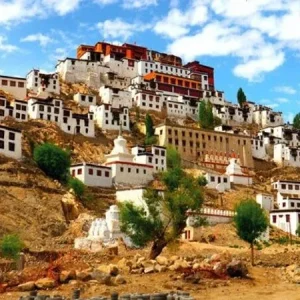
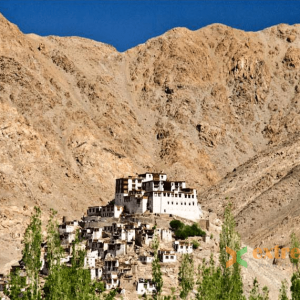
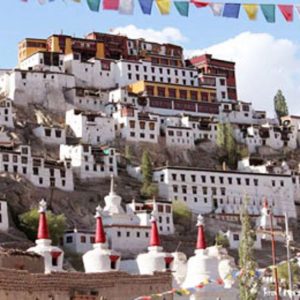
Overview of Alchi Monastery: A Quick Introduction
It takes close to an hour’s drive from the capital city of Leh to get to the Alchi Monastery, which is approximately 70 kilometers away. Situated in a small valley close to the Indus River, Alchi is unique due to its position on flat grounds unlike other monasteries that are built on elevated terrains. The monastery is famed to be one of the oldest and most distinctive in Ladakh as it was erected in the 11th century by the Tibetan scholar and Lama Ringchen Zangpo. Both an architectural wonder and a worship center, this Alchi merits a visit for it holds priceless jewels of Buddhist civilization.
The paintings, frescoes, and sculptures located in the monastery are of utmost importance as they remain some of the only surviving pieces from the early periods of Tibetan Buddhism and tell a story about their people. Many travelers describe Alchi as a quieter and calm place compared to the other more popular monasteries. If in Ladakh, the Alchi Monastery is a must and should be at the top of your list.
Alchi Monastery – The Place Steeped In Ancient Heritage
Like many British forts found in Kashmir, Alchi Monastery is over a thousand years old and is single handedly one of the most ancient structures in Ladakh. Unlike many others, this singular building has stood its ground for years without being tampered. The it has undergone no modifications over the years. Most historical dates indicate ringchen Zangpo, who expanded the borders of Buddhism within ladakh is said to have built this Monastery.
The construction of the monastary was done in the same period when Buddhism was gaining momentum in the region as there was an amalgamation of Indian and Tibetan Art. Alchi, which became a fusion of Kashmiri, Indian and Tibetan art remains a testimony of this change. The combination of the location of the monastery, the architecture, the inscribed scriptures of Buddhism led to the assumptions of a fostered spiritual importance in Ladakh.
In addition to being a monumental site, the monastery served as a prominent educational institution for Tibetan Buddhism containing numerous sacred texts. Peak period of the monastery is said to be accompanied by abundant infrastructure available leading to scholars and monks visiting regularly.
Alchi Monastery Architectural Wonders
Outstanding features of Alchi Monastery includes the distinct styles of the surrounding regions. Most of the other monasteries within the vicinity are situated on the mountains while Alchi lies on the valley plains. Each shrine of the Monastery temples have an individual design and distinctive historical value.
1. Dukhang (the Assembly Hall)
Dukhang is the heart of Alchi Monastery. It is also the assembly hall where monks come together for prayer, meditation, and even teachings. The insightful and devoted trekkers can also see some of the intricate and colorful murals depicting various Buddhist deities, Bodhisattvas, and mandalas. These paintings are done in a Tibetan style which incorporates elements of Kashmir and Central Asia.
Dukhang also has the greatest statue of Sakyamuni Buddha under which smaller statues of various Buddhist deities surround him. This Monastery is not only the center point of Dukhang while being the spiritual center, but also serves as a distinctive masterpiece of worship. One of the other temples of this monastery is richly adorned with splendid woodwork, intricately carved doors, and brilliantly painted frescoes.
2. The Sumtseg Temple
The most famous other temple in Alchi Monastery complex is The Sumtseg Temple. It is most known for the temple’s Indo-Tibetan architectural design considered one of the finest examples in the region. The temple is built in three stories and uses intricate sakura and Bodhisattva head sculptures alongside other mythological scenes.
3. Manjushri’s Temple
Manjushri’s Temple is revered and serves as one of the temples in the monastery. The temple includes a massive sculptures of Manjushri with smaller sculptures surrounding him. The walls are painted with magnificent murals capturing Manjushri, Manjushri’s enlightenment alongside his life and pilgrimage.
4. Murals of Alchi
Another breathtaking aspect of Alchi Monastery is the murals. Because of the desert climate of Ladakh region, it is dry and allows the preservation of archaic art, such as these astounding murals. Expressions of artistic and spiritual Buddhist teachings are captured in these murals, which glorify the life of Buddha, bodhisattvas, and other deities.
Most of the artworks are dedicated to classic paintings of Buddha in different positions, and also the Buddhist deities and degress. Other murals show scenes from the Jataka tales—stories about the past lives of the Buddha—and symbolic representations of Buddhist teachings such as the life cycle and the enlightenment path.
5. Woodworks and Sculptures
Alongside with the fascinating Alchi Monastery paintings, one can enjoy the astonishing woodwork and sculptures as well. The prayer halls and temples show off the exquisitely carved wooden doors along with beams and supports, which is done in very fine detail. Many of these wooden elements feature motifs of flowers, animals, and Buddhist symbols, which prove Kashmiri artisans had great skill.
The Alchi sculptures are of equal importance concerning the spiritual and artistic history of the monastery. Shrines and temples are populated by statues of different divinities sculpted with remarkable precincts, eyes, and hands, among them Buddha.
Spiritual Practices at Alchi Buddhist Monastery
Even though Alchi Monastery receives praises for its architecture and art, it is still a functioning center for reverence. It is under the Drukpa Kagyu sect of Tibetan Buddhism which is considered a primary branch of Tibetan Buddhism. Monastery guests are frequently offered to see monks perform their everyday rituals, such as chanting or meditating.
Daily Life of Monks in Alchi Monastery
Monks of the Alchi Monastery engage themselves intensively in the philosophy of Buddhism, meditation, and prayer. The spiritual literature of the monastery is maintained intact by the monks, who are always in oblivious adherence to the religion’s principles, in this case, the Buddha. As part of the popular Tibetan Buddhist customs, each day the try to complete numerous nadinkas of ceremonies and rituals.
Participating in the routine of the Alchi monastery is for sure one of the most memorable experiences for any traveler. The atmosphere of indefatigable prayers combined with rhythmic chants will allow one to truly feel the calmness and restoration energy that is sought by many people around the world.
Worship and Pilgrimage
The Alchi Monastery holds overwhelming importance for Tibetan Buddhists, as it serves as a sacred pilgrimage location. Mediation, prayer and blessing are activities performed at the monastery by many Buddhists. Devotees from different parts of the world are attracted to the complex monastery because of its relics, which are considered sacred within the Buddhist religion. Along with other monasteries like Likir and Hemis, Alchi forms a pilgrimage circuit which many Alchi Monastery visit as part of their travels.
Reaching Alchi Monastery
The closest city to Alchi Monastery is Leh, the capital of Ladakh which is 70 kilometers away from the monastery. Access can be obtained through road, biking, or guided tours.
By Road
Driving by road from Leh is the preferred choice to reach Alchi Monastery. The distance takes around 1.5 to 2 hours depending on traffic and other road hindrances. A taxi or bike can easily be rented from Leh. Maintained roads and breathtaking views of the Himalayas make the journey much more appealing.
By Bike
For adventure seekers, the most preferred means of transport is to rent a bike and ride it to the Alchi Monastery. The roads are picturesque, and the ride allows one to appreciate the splendid beauty of Ladakh. Motorcycles as well as bicycles are available for rent at numerous bike rental shops located in Leh, which allows tourists to have an easier mobility across the region.
By Bus
In Leh, it is possible to find public buses going to Alchi, although they are less frequent than taxis or private vehicles. In general, the use of a private vehicle or joining a guided tour are far more comfortable choices, especially for tourists with limited time.
Best Time to Visit Alchi Monastery
Alchi Monastery may be visited any time of the year, but summer, particularly in the months of May to September is ideal as the temperatures range from 15°C to 30°C which is suitable for travel and sightseeing. Most importantly, the roads leading to Alchi are typically clear of heavy traffic during this time, as snowfalls are not common and the weather is stable.
Throughout winter, the temperatures in Ladakh can reach frigid levels, and heavy snowfall renders several roads impassable. For a more enjoyable excursion, it is recommended to schedule your visit at Alchi Monastery during the summer months.
Alchi Monastery Visiting Guidelines
- Dress Conservatively: Since Alchi functions as a place of active worship, we ask you to dress accordingly. Clothes need to be modest, meaning shoulders and knees need to be covered. Avoid wearing attention grabbing or mincing clothing.
- Show Consideration to Monks: When wishing to engage with monks, make sure to approach them with respect. Avoid disrupting their prayers or ceremonies. Always ask if you can take any pictures inside the prayer halls.
- Adjusting to the Area: Since these regions are high in altitude, it is necessary to first adjust to the heights before heading to Alchi. Plan spending a couple of days in Leh before moving any further to alleviate the chances of altitude sickness.
- Be sure to bring cash with you, as there are no ATM’s located in Alchi. Ensure you have enough money to cover any donations purchased.
- In Ladakh, the air is considerably dry which can lead to dehydrating. Make sure to consume plenty of water throughout your stay.
Conclusion: An Expedition Through Eons and the Soul
Alchi Monastery encapsulates no content beyond a historical site; rather, it embodies the ever-potent force of spirituality and culture fused into one. It serves as a window into the past through its fascinating artworks and deeply rooted spiritual practices, alongside offering peace and quiet for contemplation. Alchi is a must-visit for anyone traveling to Leh and Ladakh. The destination offers a blend of art, history, and spirituality, all in one unheard of experience. From indulging in the artistic relics to seeking a soul fulfilling experience, a trip to Alchi Monastery guarantees everlasting memories.
How to book Ladakh tour?
Contact a travel agency that specializes in Kashmir tours. You can reach out to the following for assistance:
- Phone:
- +91 7889 655596
- +91 7006 891267
- Email:
Inquire about tour packages, itineraries, and pricing, and confirm your booking for a memorable winter experience!
People Also Ask
What is Alchi Monastery?
Alchi Monastery is one of the oldest and most revered Buddhist monasteries in Ladakh, India, located along the banks of the Indus River. It is famous for its historical significance, unique Indo-Tibetan architecture, stunning murals, and spiritual importance.
How old is Alchi Monastery?
Alchi Monastery was established in the 11th century by the Tibetan scholar and Lama Ringchen Zangpo. It is over 900 years old and is one of the few monasteries in Ladakh that has remained largely unchanged throughout history.
Where is Alchi Monastery located?
Alchi Monastery is situated in the Leh district of Ladakh, about 70 kilometers from Leh city. It lies along the Indus River in a small village called Alchi.
What makes Alchi Monastery unique?
Alchi Monastery stands out for its distinctive location on flat land, unlike many other monasteries in Ladakh that are perched atop hills. Its architecture blends Kashmiri, Tibetan, and Indian styles, and it houses rare ancient murals and Buddhist scriptures.
What is the best time to visit Alchi Monastery?
The best time to visit Alchi Monastery is between May and September, during the summer months when the weather is mild, and the roads are easily accessible. The winter months are too cold, and some roads may be closed due to heavy snowfall.
How do I reach Alchi Monastery from Leh?
You can reach Alchi Monastery from Leh by road. It is approximately a 1.5-2 hour drive. You can hire a taxi, rent a bike, or go on a guided tour to reach the monastery.
What are the key attractions at Alchi Monastery?
The key attractions at Alchi Monastery include the Dukhang (Assembly Hall), the Sumtseg Temple, and the Temple of Manjushri. Each structure features intricate murals, wood carvings, and statues of Buddhist deities.
What is the significance of the murals at Alchi Monastery?
The murals at Alchi Monastery are famous for their vivid colors and detailed depictions of Buddhist deities, mandalas, and Jataka tales. They are a blend of Kashmiri, Tibetan, and Central Asian art styles, offering a glimpse into the spiritual life of the time.
Is Alchi Monastery still in use?
Yes, Alchi Monastery is still an active place of worship and is home to a community of monks who continue to perform prayers, rituals, and meditation. It is also a center of Buddhist learning.
Can visitors meditate at Alchi Monastery?
Yes, Alchi Monastery is a peaceful and serene place, ideal for meditation. Visitors can spend time reflecting, meditating, and appreciating the calming environment, but it’s important to be respectful of the monks and their routines.
Is there an entrance fee to visit Alchi Monastery?
There is a small entrance fee to visit Alchi Monastery, which helps with the upkeep of the monastery. It is generally affordable, but it’s best to check with local authorities or your guide for current rates.
What are the nearby attractions to Alchi Monastery?
Nearby attractions include the Likir Monastery, Magnetic Hill, and the confluence of the Zanskar and Indus Rivers. These sites are also rich in spiritual significance and offer visitors more insights into Ladakhi culture and Buddhist heritage.
Is photography allowed at Alchi Monastery?
Photography is generally allowed at Alchi Monastery, but it’s important to ask for permission, especially when inside the prayer halls or around monks. Always be respectful and avoid using a flash near religious artifacts or murals.
What is the architecture of Alchi Monastery like?
Alchi Monastery features Indo-Tibetan architecture, with several temples and shrines. The structures are made of wood and stone, adorned with beautiful carvings, intricate murals, and statues. The layout includes prayer halls, shrines, and courtyards.
Can I stay near Alchi Monastery?
Yes, there are a few guesthouses and small accommodations near Alchi Village where visitors can stay. Staying in the village offers a more rustic, authentic Ladakhi experience.
What religious sect does Alchi Monastery belong to?
Alchi Monastery belongs to the Drukpa Kagyu sect of Tibetan Buddhism, which is part of the larger Kagyu school of Tibetan Buddhism. The monastery plays an important role in the Drukpa Kagyu tradition in Ladakh.
Is Alchi Monastery a pilgrimage site?
Yes, Alchi Monastery is an important pilgrimage site for Tibetan Buddhists. Pilgrims visit the monastery to pray, meditate, and receive blessings. It is also considered a spiritual center for monks and devotees.
What can I expect when visiting Alchi Monastery?
When visiting Alchi Monastery, expect to experience a peaceful, serene atmosphere. You’ll be able to explore the ancient murals, intricate woodwork, and statues of various Buddhist deities. You might also see monks engaged in prayers and rituals, adding to the spiritual ambiance.
Are there guided tours available for Alchi Monastery?
Yes, guided tours are available to help visitors understand the history, architecture, and spiritual significance of Alchi Monastery. Local guides can provide valuable insights into the murals, sculptures, and teachings.
What is the Dukhang Assembly Hall?
The Dukhang is the main assembly hall in Alchi Monastery, where monks gather for prayer, meditation, and teachings. Inside, you will find murals, a large statue of Buddha, and other important religious symbols.
What are the Sumtseg and Manjushri Temples?
The Sumtseg Temple is known for its three-tiered structure and detailed murals, while the Manjushri Temple is dedicated to the Bodhisattva of Wisdom. Both temples feature stunning artwork and are key attractions within the monastery complex.
What should I wear when visiting Alchi Monastery?
When visiting Alchi Monastery, it’s important to dress modestly. Cover your shoulders and knees, and avoid wearing flashy or revealing clothes. This is particularly important when visiting sacred areas like prayer halls or temples.
What are the altitude concerns in Ladakh?
Ladakh is located at a high altitude, and visitors are advised to acclimatize to the region to avoid altitude sickness. Spend a couple of days in Leh before heading to places like Alchi Monastery to allow your body time to adjust.
Can I buy souvenirs at Alchi Monastery?
Yes, you can find small shops near the monastery that sell souvenirs, including prayer wheels, Tibetan handicrafts, and Buddhist artifacts. It’s a good way to support local artisans and take home a memento from your visit.
How long should I spend at Alchi Monastery?
A visit to Alchi Monastery typically takes about 2-3 hours, depending on how much time you wish to spend exploring the murals, temples, and surrounding areas. If you want to meditate or reflect, you can spend additional time in the monastery grounds.
Is there food available near Alchi Monastery?
There are limited food options directly near Alchi Monastery. However, small restaurants or local eateries can be found in Alchi Village. For more variety, it’s best to head back to Leh, where there are more dining options.
What is the cultural significance of Alchi Monastery?
Alchi Monastery is culturally significant due to its role in the spread of Buddhism in Ladakh. It represents the fusion of Tibetan, Kashmiri, and Indian cultural influences, and the monastery’s art, architecture, and spiritual practices offer a unique glimpse into the region’s history.
Are there any other monasteries nearby Alchi Monastery?
Yes, nearby monasteries include Likir Monastery, which is located about 5 kilometers from Alchi, and the Hemis Monastery, which is one of the largest and wealthiest monasteries in Ladakh. Both offer rich cultural and spiritual experiences.
What are the nearby attractions to Alchi Monastery?
Apart from the monasteries, nearby attractions include the Confluence of the Indus and Zanskar rivers, Magnetic Hill, and the beautiful landscapes of the Ladakh region, which offer great opportunities for photography and exploration.
Is Alchi Monastery open to tourists year-round?
Yes, Alchi Monastery is open year-round, but it is recommended to visit between May and September, as the weather is more favorable and travel conditions are better. In winter, the harsh weather conditions may limit access.



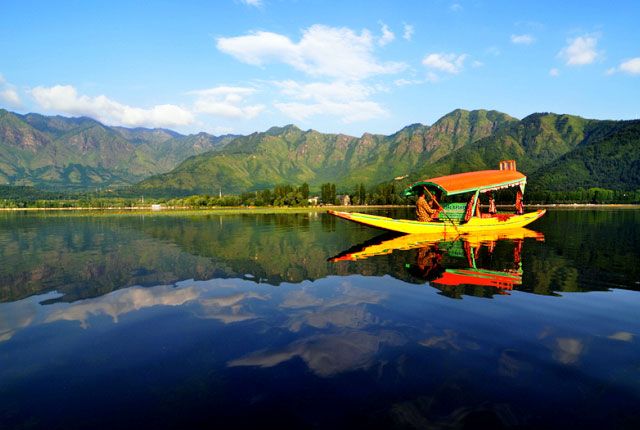
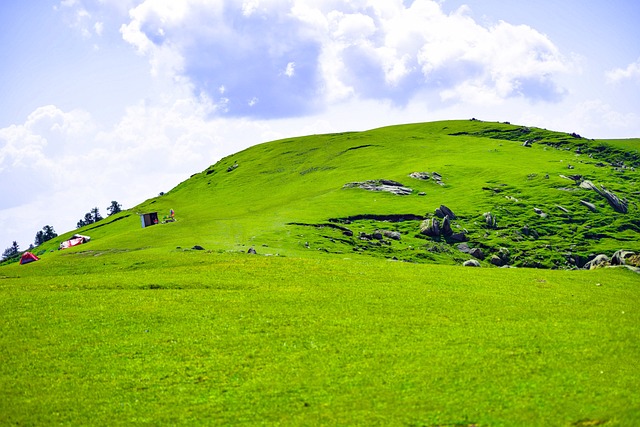
Best travel agency… Drivers are punctual on time… Well behaved and sincere…….